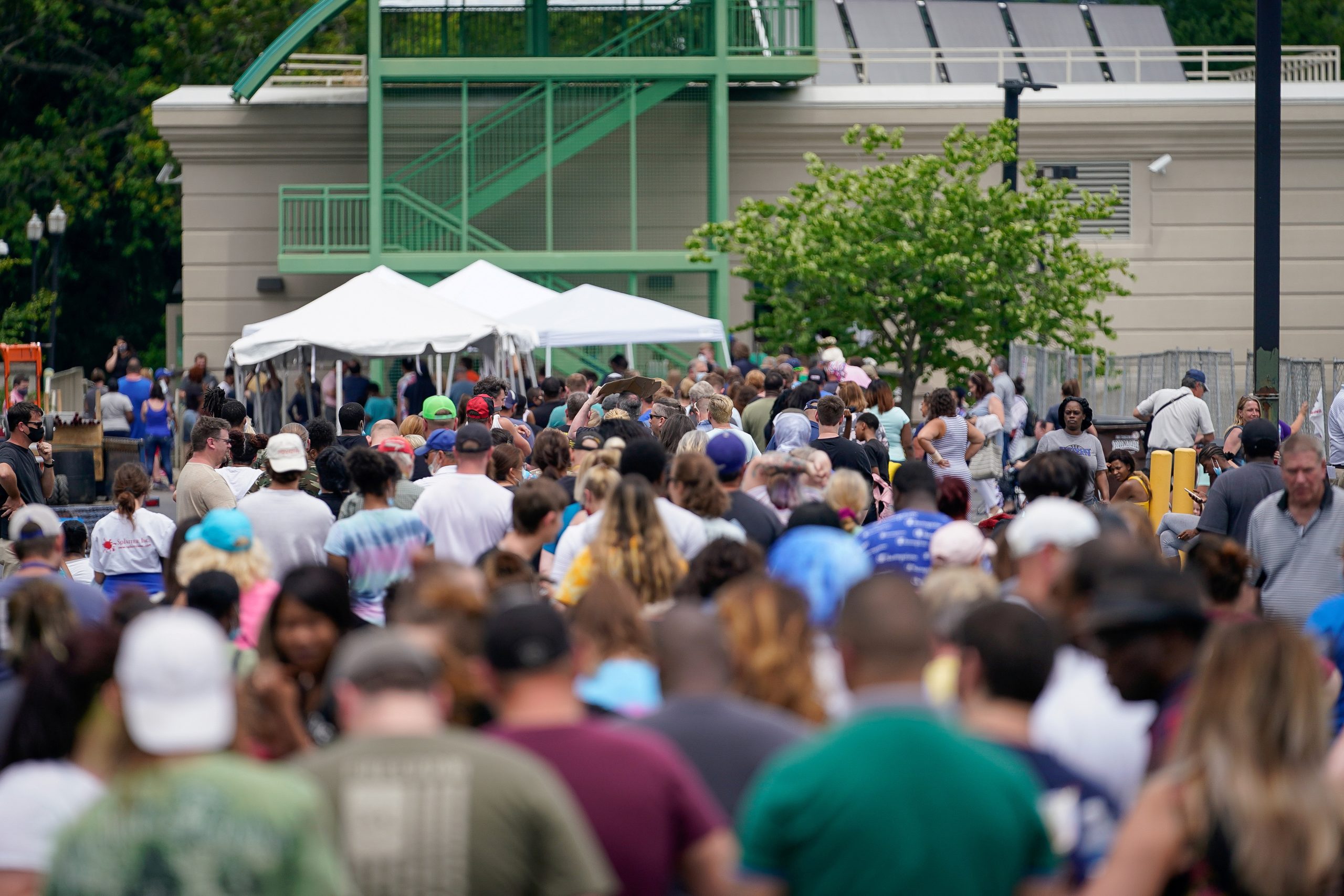
[elfsight_social_share_buttons id=”1″]
The number of Americans filing new claims for unemployment benefits fell to a five-month low last week as the labor market remains resilient despite rising headwinds from the Federal Reserve’s stiff interest rate increases and slowing demand.
The weekly unemployment claims report from the Labor Department on Thursday, the most timely data on the economy’s health, also showed jobless rolls shrinking to their lowest level in just over two months in mid-September. That raises the risk that the unemployment rate will drop this month, keeping the Fed on its aggressive monetary policy tightening path.
“The Fed won’t be slowing the pace of their rate hikes yet with 75 basis points in November and 50 basis points more in December a virtual certainty,” said Christopher Rupkey, chief economist at FWDBONDS in New York.
“The Fed is going to go until something breaks, but so far, nothing is breaking besides the stock market and early signs that home prices are starting to fall.”
Initial claims for state unemployment benefits decreased 16,000 to a seasonally adjusted 193,000 for the week ended Sept. 24, the lowest level since April. Data for the prior week was revised to show 4,000 fewer applications filed than previously reported. Economists polled by Reuters had forecast 215,000 applications for the latest week.
While there have been reports of some companies laying off workers, economists say most employers are hoarding labor after experiencing hiring difficulties in the past year as the COVID-19 pandemic forced some people out of the workforce, in part because of prolonged illness caused by the virus.
They expect companies to pull back on hiring before resorting to widespread job cuts. Hurricane Ian, which slammed Florida on Wednesday, could distort claims in the weeks ahead.
“The message here is still a historically tight labor market, with companies holding on to workers,” said Conrad DeQuadros, senior economic advisor at Brean Capital in New York.
Unadjusted claims declined by 12,642 to 156,060 last week. There was a sharp drop in applications in Michigan, as well as notable decreases in New Jersey, New York, and Missouri. They more than offset increases in Massachusetts and Ohio.
The Fed wants to cool labor demand in order to bring inflation down to the U.S. central bank’s 2% target. The oversized rate hikes are heightening recession risks.
Stocks on Wall Street were trading lower. The dollar rose against a basket of currencies. U.S. Treasury prices fell.
Tight Labor Market
The Fed bank last week raised its policy interest rate by 75 basis points, its third straight increase of that magnitude, and signaled more large increases to come this year. Since March, the Fed has hiked its policy rate from near zero to the current range of 3.00% to 3.25%.
There were 11.2 million job openings at the end of July, with two jobs for every unemployed person.
The claims report showed the number of people receiving benefits after an initial week of aid fell by 29,000 to 1.347 million in the week ending Sept. 17, the lowest level since July. The so-called continuing claims data, a proxy for hiring, covered the week that the government surveyed households for September’s unemployment rate.
Continuing claims dropped by 65,000 between the August and September survey periods. The unemployment rate rose to 3.7% in August from 3.5% in July.
The Fed last week raised its median forecast for the unemployment rate this year to 3.8% from its previous projection of 3.7% in June. It boosted its estimate for 2023 to 4.4% from the 3.9% projected in June.
Despite labor market strength, the economy is struggling.
A separate report from the Commerce Department on Thursday confirmed that gross domestic product fell at an unrevised 0.6% annualized rate in the second quarter. The economy contracted at a 1.6% rate in the first quarter.
Details of the third estimate of GDP were mixed. Consumer spending, which accounts for more than two-thirds of U.S. economic activity, was stronger than previously estimated.
But corporate profits, wages, and proprietors’ income were revised lower. As a result, growth in gross domestic income (GDI), which measures economic activity from incomes earned and the costs incurred in the production of GDP was revised sharply down to a rate of 0.1% from the previously reported 1.4% pace.
In principle, GDP and GDI should be equal, but in practice differ as they are estimated using different and largely independent source data. Historically, GDP has been revised towards GDI, and this year marked a reversal of the trend.
The average of GDP and GDI, also referred to as gross domestic output and considered a better measure of economic activity, was revised lower to show it falling at a 0.3% rate instead of rising at a 0.4% pace as previously reported. It declined at a 0.4% rate in the first quarter, revised down from a previously reported 0.1% growth pace.
The government also revised GDP data from the fourth quarter of 2016 through the end of 2021, which showed the gap between GDP and GDI was only -0.6% of GDP in 2021. The so-called statistical discrepancy was previously reported at -2.3%.
The revisions also showed the economy’s recovery from the COVID-19 pandemic was much stronger than initially thought, but the recession remained the deepest on record.
In addition to rising borrowing costs, inventories are also casting a pall over the economy.
A sharp slowdown in the pace of inventory accumulation from the first quarter accounted for the weakness in GDP in the April-June quarter. But businesses are sitting on a larger stockpile of goods than previously estimated.
“Inventories are financed with short-term borrowed money, making them most sensitive to Fed policy,” said Chris Low, chief economist at FHN Financial in New York. “Companies have a growing financial incentive to trim them. They have not even started to cut back and when they do, if they cut them quickly, the recession will be deep.”
Copyright 2022 Thomson/Reuters
